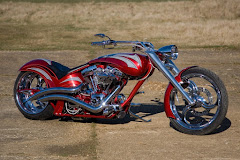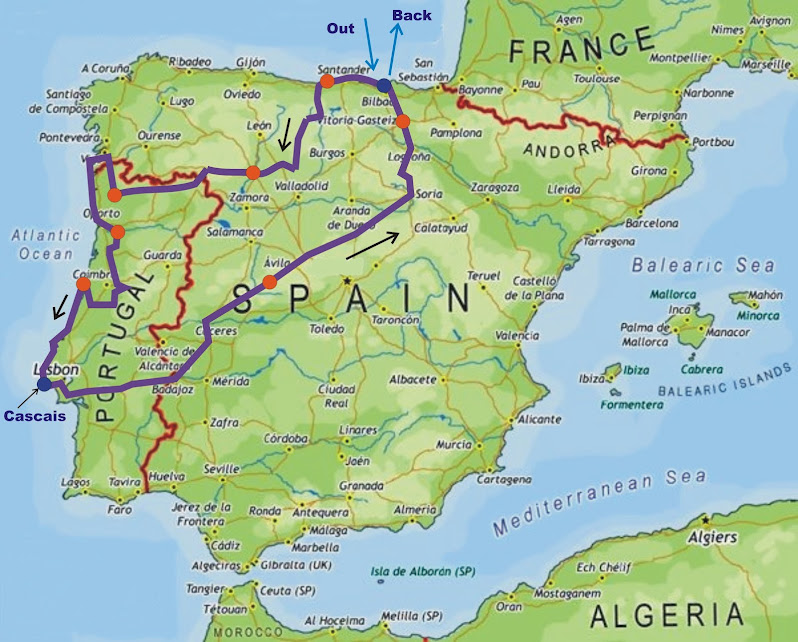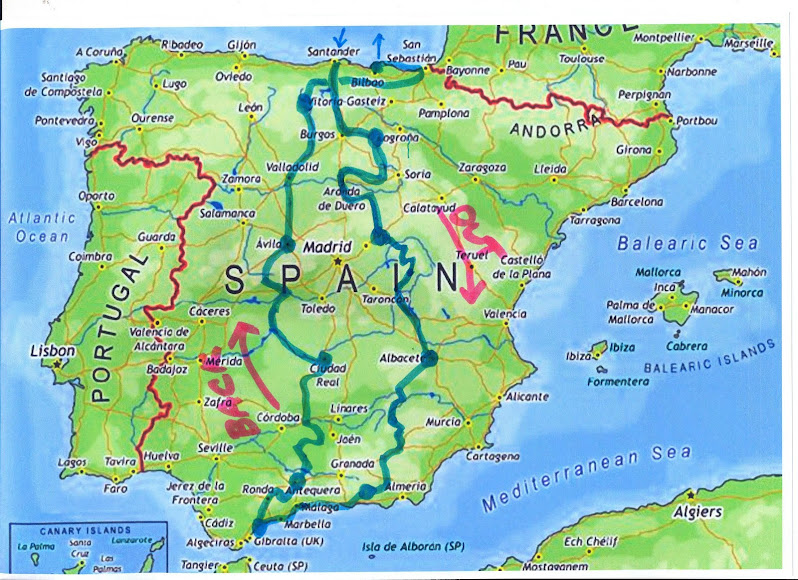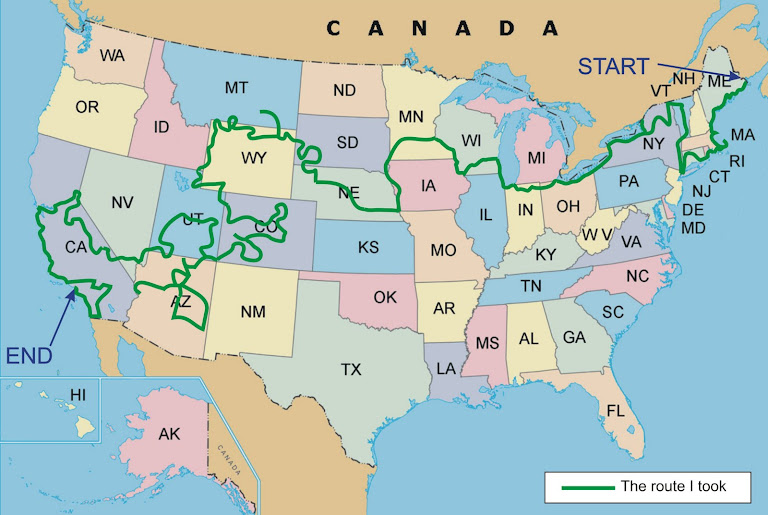Depending on where you live and local weather conditions, you might need to stop using your motorcycle during the winter months. If you stop riding when the weather is bad, you could just park your motorcycle, lock it up and hope that all will be well when the weather improves and you want to ride again. But, I wouldn’t do that as you are inviting trouble.
Here are ten things you could do to prepare your motorcycle for winter storage and to help keep it in the best condition while it isn’t being used. Actually, there are 11 things recommended in this guide, but the last suggestion is not very practical.
You can find a printable version of this guide at
http://www.garysfrance.com/motorcycle-touring-guides/
1. CLEAN AND PROTECT IT.
Why: Leaving a motorcycle over the winter that has insects, water spots or salt will deteriorate the surfaces of your bike.
What: Thoroughly wash the bike, removing all traces of dirt, insects and road tar. Make sure the bike is completely dry, especially in the nooks and crannies. Using a leaf blower or a specialist drier such as a Master Blaster will make drying much quicker. Polish all chrome and aluminium.
Treat leather or vinyl saddlebags, seats and straps with appropriate products. Wax all painted surfaces, as this will protect against moisture. Use a water repellent spray such as WD40 on all metal surfaces, such as the frame and engine. This will give a protective coating against moisture and will help prevent rust.
2. FUEL
Why: To stop the inside of your fuel tank from rusting and to prevent old fuel from ‘gumming’ and becoming sticky.
What: The inside of your fuel tank will not rust if it is full, so top it up with fresh fuel. The correct level is when the fuel just touches the bottom of the filler neck. This gives enough room for the fuel to expand without overflowing the tank when temperature rises. However, before doing so, add a fuel stabiliser to prevent the fuel from degrading. Old fuel will start to evaporate and you lose some of the light components in the fuel. Those light components include highly important butane. As these components are lost, the fuel loses its volatility. Adding a fuel stabilser will prevent this. Under the right conditions, fuel can last up to 12 months, but will start to degrade after as little as 3 to 4 weeks.
After adding the stabilser and filling your tank, run the engine for a while to ensure the stabilised fuel runs into fuel pipes and injectors. Particularly vulnerable are carburettors and these should be drained before putting your bike away for winter. The easiest way of doing this is to turn off the fuel tap and either remove the float bowl and pour away the fuel, or simply run the engine until the fuel in the carb is used up and the engine stops. If your bike is fuel-injected, you don't need to do this.
3. LUBRICATION
Why: Untreated metal surfaces will rust, especially when a motorcycle is not used during periods of a lot of moisture in the air (ie winter!).
What: One of the most important areas in need of protection are the piston rings and cylinder walls. Moisture can enter the engine from any of a number of places and cause serious damage. Warm the engine first by running it for a few minutes. This eliminates any moisture that may have accumulated already. Turn the bike off and remove the spark plugs. Then put about a tablespoon (5 cc) of engine oil into each plug hole. To spread the oil over the cylinder walls, you need to turn the engine over. If your bike has a carbureter and you have already drained the carb and turned iff the fuel, you can do this by hitting the starter button for a second. If your bike is fuel injected, crank the engine by hand by putting it in top gear and turn the rear wheel. Make sure the plugs are out when you turn the engine over. Then replace the plugs.
Keeping moving parts lubricated during the winter will help keep moisture from building up on them and causing any rusting or binding. Any part of your motorcycle that normally needs to be kept lubricated should also be lubricated again just before storage. Recommended parts to check are: sprockets and the final drive chain, cables, controls such as levers, fork surfaces, and any other pivot points.
4. CHANGE THE ENGINE OIL
Why: By-products of combustion produce acids in the oil which will harm the inner metal surfaces of your engine.
What: Change your oil and filter. It's better for your lubrication system to have fresh oil sitting in it for several months than to have used, broken down oil in it, not to mention the last thing you'll want to do when riding season begins is change the oil before you can go ride. Change the oil filter too.
5. TYRES (US:TIRES)
Why: If your tyres are left to sit in the same position all winter long, they could develop flat spots. Rubber cracks when frozen, so preventing the tyre from coming into contact with a very cold floor is good.
What: Check tyre pressures before putting your motorcycle away. Check these a few times over the winter months. The maximum pressure is shown on the tyre sidewall. If your motorcycle has a centre stand, then use it to at least get the rear tyre off the ground. It is far better to get the weight of the bike off the tyres. If you don’t have a centre stand, consider buying a scissor lift, which sits beneath the bike and lifts the whole bike off the ground. Alternatively, place plywood or carpet under the wheels. Move the bike every week or so to prevent the same part of the tyres sitting on the ground.
6. BATTERY
Why: The battery in your motorcycle will discharge some, or all, of its power if simply left over the winter.
What: There are two schools of thought about what to do with your battery; remove it for the winter, or leave it in the bike. To me, this depends on whether your bike has an alarm or tracker in which case you will want to leave the battery in your bike. I prefer to leave the battery in the bike. If you want to remove the battery and store it for the winter, you should wipe the surfaces down and wire brush the terminals to clean them. Top up the cells if necessary, although many modern batteries are the sealed type that don't require topping up. Store the battery off the ground (to prevent freezing) and connect the battery to a trickle charger for at least eight hours a month, or use a battery tender (see below).
If you are going to leave the battery connected in your bike over the winter, remove it temporarily, wipe the battery surfaces down and wire brush the terminals to clean them. Give the terminals and bolts a light coating of grease to prevent future corrosion.
The best and most convenient way to care for your battery is to hook a battery tender to it. A battery tender will switch from ‘charge’ to ‘maintain’, meaning it will charge when needed and shut itself off when fully charged, so you also don't have to worry about overcharging your battery. You just plug it in and leave it alone. Battery tenders come with a wire pigtail, which will connect directly to the battery terminals, and the connector can now be accessed without having to remove the seat.
7. EXHAUST PIPES
Why: Pipes can rust easily. Mice and other rodents can set up home in them.
What: Exhausts pipes are known to rust fast when they are not used. Spray a light oil (such as WD40) into the pipe ends and drain holes. Stuff some steel wool into the exhaust pipe to keep out rodents and other small wildlife. Spray WD40 onto the steel wool to prevent it from rusting. Some people stuff plastic bags in their pipes to act as a plug but I wouldn’t do that. Mice chew plastic! Whatever you use, tie something brightly coloured to them so you don't forget take them out when you later fire up the bike! Place a plastic bag over the ends of the pipes and secure with an elastic band. This helps prevent moisture from getting inside the exhaust.
8. CHECK THE BIKES FLUIDS
Why: If your motorcycle is water-cooled, you need to add anti-freeze to stop the water from freezing and damaging the engine. Also, hydraulic brake and clutch fluids are ‘hygroscopic’ meaning they will absorb moisture. Fluids contaminated with water can cause corrosion inside the systems.
What: What you do here depends greatly on how well you are able to self-maintain your motorcycle, along with how well it has been maintained during the year. My motorcycle is regularly serviced, so I don't need to do anything special here before its winter storage. If you'll be storing your motorcycle somewhere that is likely to go below freezing, make sure you have adequate levels of anti-freeze in your coolant system. This is very important, for if you use just plain water in your system you could severely damage your engine.
If the brake or clutch fluids haven't been changed for a couple of years, now is a good time to change them, or have a dealership / mechanic do it for you.
9. LOCK IT
Why: Because there are nasty people out there who will steal your pride and joy.
What: This depends where you are storing the bike. The best solution is to secure it with a thick chain to something immovable, such as a street light or a ground anchor in your garage. If you have two motorcycles, chain them together, as it is very difficult to lift two motorcycles at the same time. Always set the alarm. Consider buying a burglar alarm for your garage.
10. COVER IT
Why: Because you want to keep dust, dirt, bird crap and other stuff off your bike.
What: What you cover your motorcycle with depends on where you will store it. Ideally, you will store the machine in a garage or shed, away from windows, as direct sunlight will fade your paintwork over time.
Cover the bike with something that breathes, in order to prevent a moisture build up under the cover. Never use plastic. You can buy a purpose made bike cover or use something like an old bed sheet. Obviously a purpose made cover that fits your motorcycle well is preferred. If are having to store your motorcycle outside, you must use a purpose-designed bike cover. Make sure you get a cover with tie downs to prevent it from blowing loose in wind.
11. MOVE TO A BETTER CLIMATE
Why: Because the winters are less severe.
What: Live in a hot country where you can ride your motorbike all winter. Okay, it is not really practical.....
GETTING YOUR BIKE READY TO RIDE AGAIN.
Okay, so it is now spring and you are ready to ride your motorcycle again. Here is a list of what you need to do.
1. First, remove the cover and put it where you can find it again.
2. Remove anything you placed in or over the ends of the exhaust pipes. Check to see if anything tried to live in there.
3. Check the battery tender indication lights. You should have done this periodically over the winter as well. Normally a green light indicates the battery is fully charged. Disconnect the tender.
4. If you removed the battery for the winter, replace it, connecting the positive (+) cable (red) before the (-) negative and covering the terminals with the plastic covers.
5. If the bike is on a scissor lift stand, remove it.
6. Check the tyre pressures.
7. Check all fluid levels
8. Remove and inspect the spark plugs and change them if needed. A fresh set of plugs are cheap and replacing them never hurts.
9. Clean out the air filter. You'd be surprised how much junk can collect in the air filter while a bike is in storage. If the filter is dirty (black or with grime on it), then replace it.
10. If you have a fuel tap, turn on the fuel.
11. Take a good long look at the motorcycle, checking for anything that looks wrong such as cracked tires, broken parts/plastic, leaking oil.
12. Put the bike into first gear, pull the clutch lever in and push the bike back and forth a few times. This will ensure the clutch is working properly.
13. Check all electrics such as lights, horn etc.
14. Check the operation of the brakes, levers, suspension etc.
15. Perform normal lubrication, such as the chain.
Start the engine and let it reach normal running temperature. Leave the bike for a few minutes to let the oil settle and with the engine still warm, check the oil level. It's important to check the level after the bike has run for a few minutes to give the oil a chance to lubricate the various parts of the bike. Top up to the correct level if necessary.
Remember that you haven’t ridden your motorcycle for a few months and your riding skills will have diminished over the winter. Start with a few short rides to get yourself back in shape for riding. Get used to the road conditions and surfaces once again and take it easy at first, checking things like brakes at slow speeds.



_map%2B(1).png)




































.jpg)












